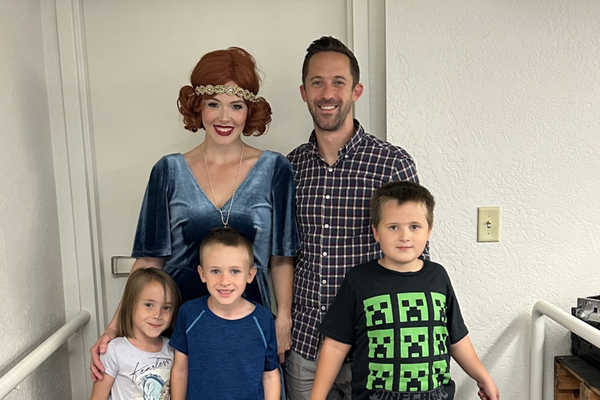
With an exhibition of Beryl Cook’s work having just opened at Studio Voltaire in London, I have been thinking about what it means to occupy a fat body. I love Cook’s paintings and all their chubby glory. They are celebratory, glamorous, from the sassy half-moon of bum cheek dipping out of well-filled leopard-print shorts, to a gaggle of women, all dressed up and piling into a taxi. Cook frames the nights out we hold tight in our memories, the warmth of friends as you huddle together against the wind, heading towards the next bar and next potentially brilliant thing, perfume and hairspray following you like sparkly, scented fog.
So why, when we stop looking at paintings and move into the real world, does a fat body incite such hatred? I have worked out an equation: reactions to my body operate in eight-pound fluctuations. My body can be perceived as hyper-sexualised and curvy, the type of body that men feel is OK to slide a hand down at the pub as they push past you to the bar. Yet if I put on half a stone, as people often do, I become disgusting, with the kind of body shape about which strangers feel the need to comment. People you have never met suggest better menu options in restaurants; drunk groups of men follow you shouting things that destroy you with every step. The reaction my body generates in others is inescapable.
Cook’s paintings depict rounded, lively characters who exist within the painting’s universe as whole selves, without having to compromise. In reality, I am constantly bombarded with an opposite attitude. Recently, I was sent one of the many Instagram accounts set up to expose and ridicule women on nights out. Phone footage is uploaded, showing plus-sized women leaving nightclubs in nameless but recognisable regional cities. The women are drunk and joyful, but someone has ambushed them to film them without their consent, and their faces are unblurred. In the comments, thousands of people say things like “women have no class any more”; “this is broken Britain”; “these women are an embarrassment, have they seen a mirror?” Why is it that bodies like mine may be celebrated when on a wall, but in the flesh, they’re seen as gross?
Class is intrinsic to these conversations. It’s there in Cook’s paintings, the communion of socialising, the celebration of leisure time, the moments when working-class people can finally live the lives for which we strive so hard. If there’s a news story about the “obesity crisis”, it will never feature a middle- or upper-class person with their face blurred out. These images purposefully emphasise the idea that fat is a working-class condition, another example of the “laziness of the poor”, as if our hands aren’t already weak from pulling ourselves up by our bootstraps year in year out.
Talking about being fat is terrifying. I have a body that is always seen as transient, in progress, awaiting transformation. To see fat bodies fixed in permanence through painting produces a complicated feeling. The curves of the bodies, held in the frame, bring me joy, along with conversations about the desirability of a Rubensesque figure. For a few moments I feel as if I can live honestly but I know, when I go into town on a Saturday night, this will not be the way my own body is regarded. The distance between art and life persists.
Out there, the discourse that critiques fatphobia continues, not gaining the traction its amazing advocates and organisers deserve, because people do not want to engage in conversations about it. The internal bias against fatness is too deep. To dismantle conversations around fatphobia topples the hierarchy (and markets) of multiple industries. As working-class people we are told to transcend class through aspiration at any cost. It is the same with bodies.
There are certain stereotypes we see trotted out for fat people on TV: fat person as loner, fat person as bawdy landlady, fat person as hypersexualised maximalist, the fat funny one, and yes fat people are those things, in the same way that they are also every other personality type. I feel that Cook’s paintings broaden that narrow typecasting. In her world, fat people are chunky-legged tennis players, dog walkers, glistening topless sunbathers. The paintings become a place for fat bodies to exist. If we can understand and respect them in art, why can’t we do so in the street?
• Lisette May Monroe is an artist and writer based in Glasgow
Do you have an opinion on the issues raised in this article? If you would like to submit a response of up to 300 words by email to be considered for publication in our letters section, please click here.







